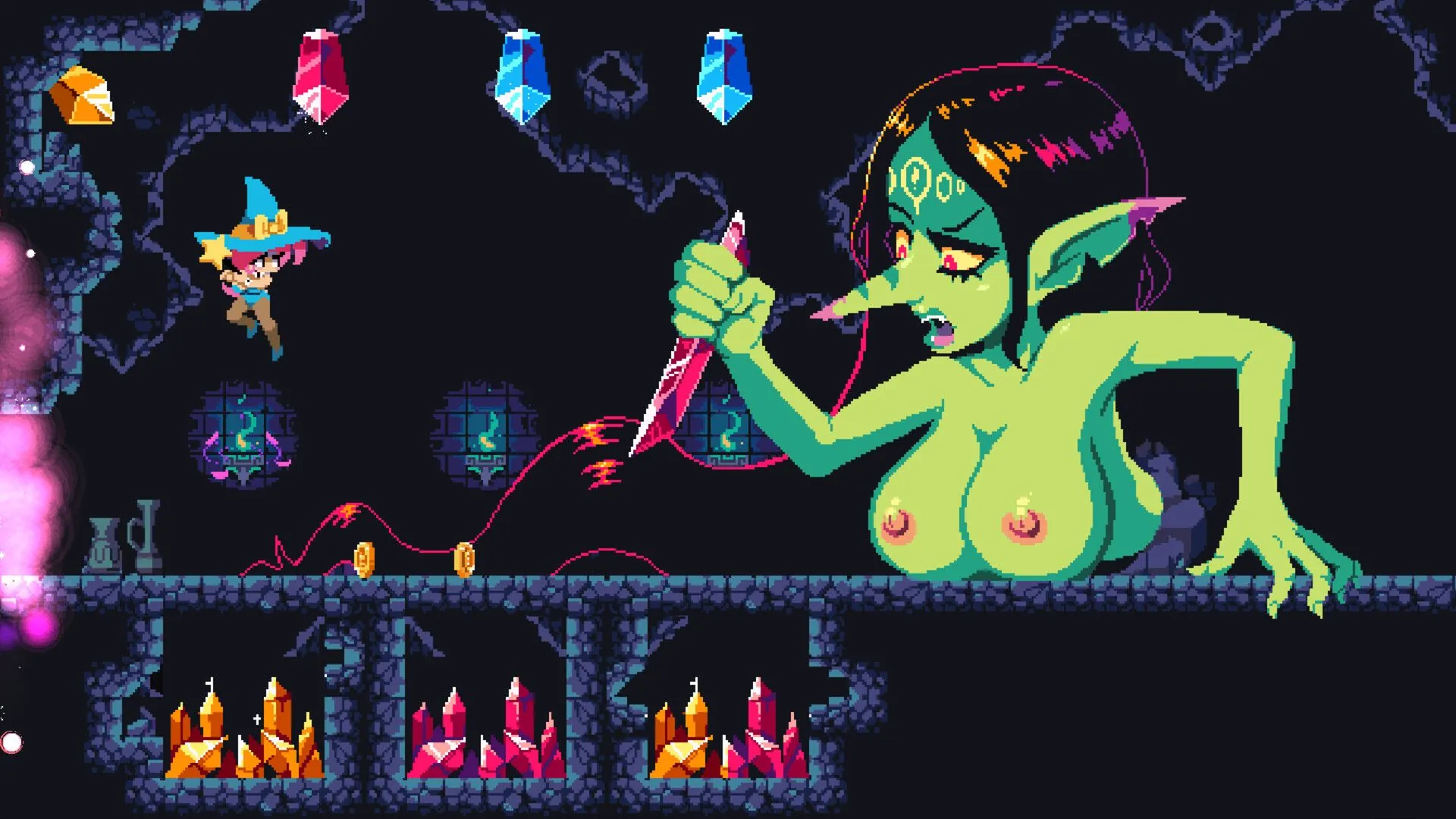
Love and Submission
Play Love and Submission
Love and Submission review
A Deep Dive into the Interactive Story
In the world of interactive storytelling, ‘Love and Submission’ offers a unique blend of romance and choice-driven narrative. This game allows players to explore different relationship paths, each with its own set of challenges and outcomes. By navigating through the story, players can build either loving or alternative relationships, influencing the game’s progression and characters’ interactions.
Gameplay Overview
Navigating Relationship Paths
Stepping into Love and Submission gameplay feels like stepping onto a delicate dance floor. 😌 You’re not just controlling an avatar; you’re actively shaping a life, navigating complex social dynamics, and deciding who gets close and how. The core of the experience lies in exploring its intricate relationship paths in games. It’s not just about picking a romantic partner; it’s about defining the nature of every significant connection. Will you build a relationship based on mutual trust and fiery passion with the ambitious artist, Leo? Or perhaps explore a more complex, mentorship-turned-romance dynamic with the enigmatic gallery owner, Ms. Thorne? 💫 Each character presents a unique puzzle, their affection unlocked not by grinding stats, but through interactive storytelling choices that reveal your character’s values and desires.
I remember my first playthrough vividly. I was instantly drawn to Adrian, the charming but somewhat aloof pianist. I thought showering him with compliments and agreeing with everything he said was the way to his heart. Big mistake! 🙈 The game brilliantly simulates real human interaction. Adrian, it turns out, values intellectual honesty and independent thought. My sycophantic approach actually pushed him away, leading to a lukewarm “just friends” ending. This taught me a crucial lesson about Love and Submission gameplay: authenticity matters. The relationship paths in games here demand you pay attention to dialogue cues, character backstories revealed in subtle interactions, and the consequences of your actions on their mood and openness.
Here’s a quick look at some of the primary romantic routes and what drives them:
| Character | Core Appeal | Key to Progress |
|---|---|---|
| Leo (Artist) | Passion, Creativity, Spontaneity | Encourage his art, embrace adventure, be emotionally open |
| Ms. Thorne (Gallery Owner) | Mystery, Power Dynamics, Refinement | Show ambition, appreciate subtlety, navigate power plays carefully |
| Adrian (Pianist) | Depth, Sensitivity, Intellectual Connection | Engage in meaningful conversation, respect his space, show genuine curiosity |
| Kai (Barista/Student) | Warmth, Reliability, Grounded Nature | Be supportive, value simplicity, demonstrate loyalty |
Practical Tip: Don’t try to be everything to everyone! Focus on 1-2 characters whose personalities genuinely intrigue you for a deeper, more satisfying romantic relationship building experience. Save often to explore different conversational branches! 💾
The beauty of the choice-driven narrative is that friendships are just as important and complex as romances. Choosing to fiercely defend a friend against gossip, or gently challenge their self-destructive habit, can solidify a powerful bond or create lasting friction. This web of connections truly defines the Love and Submission world. 😊
Impact of Player Choices
Forget illusionary choices! In Love and Submission, every decision carries weight, creating a truly dynamic player choice impact. This isn’t just about picking “nice,” “neutral,” or “mean” responses. The interactive storytelling thrives on nuance. That seemingly small decision to confide a secret in Leo instead of Adrian? It doesn’t just affect your closeness with Leo; it might make Adrian feel excluded if he finds out, altering his path. Choosing to prioritize your career over attending a partner’s important event? That resonates deeply, potentially creating a rift based on perceived values. 🧩
The choice-driven narrative engine is incredibly sophisticated. It tracks:
* Your major plot decisions (e.g., accepting a controversial job offer).
* Your consistent attitude in dialogues (e.g., supportive, ambitious, cautious, rebellious).
* Your demonstrated priorities (e.g., work vs. relationships, honesty vs. tact).
* Specific promises kept or broken.
* How you handle conflict and jealousy.
This data doesn’t just determine who likes you; it shapes the entire narrative trajectory. Your choices unlock unique scenes, alter character motivations, and close off or open up entire story arcs. The player choice impact is profound and often surprising. I once chose a brutally honest approach during a confrontation with Ms. Thorne, expecting her to shut down. Instead, she respected the boldness, unlocking a much more intimate and vulnerable side of her character I hadn’t seen before! 🤯 Conversely, constantly avoiding difficult conversations with Kai led to a slow erosion of trust we never quite recovered from.
Example: Imagine your partner (let’s say Adrian) is offered a prestigious overseas scholarship. You face a choice:
1. “That’s amazing news! You absolutely have to go!” (Enthusiastic Support)
2. “Wow… that’s far. Are you sure it’s the right time?” (Hesitant Concern)
3. “Overseas? For how long? What about… us?” (Self-Focused Worry)
- Choice 1 might strengthen Adrian’s bond with you, seeing you as selfless, but could lead to a long-distance challenge later.
- Choice 2 might show care but could be interpreted as lack of faith, planting seeds of doubt.
- Choice 3, while honest about your fears, could make Adrian feel guilty or stifled, potentially damaging the relationship’s foundation.
This single choice ripples out, influencing future dialogues about commitment, Adrian’s confidence, and even potential endings. That’s the power of interactive storytelling done right! 🔥
Practical Tip: Romantic relationship building here requires empathy. Try to anticipate how your words and actions might be received based on what you know of the character. There’s rarely a single “perfect” choice, only choices true to the moment and their consequences. Own your decisions! 😉
Game Progression and Endings
The journey through Love and Submission is a masterclass in how player choice impact directly fuels game progression and endings. Forget linear plots! Your path branches constantly based on accumulated choices, major turning points, and the health of your key relationships. The choice-driven narrative ensures that reaching a specific ending isn’t about checking boxes but living with the consequences of your unique playstyle. 🗺️
Game progression feels organic. Significant story beats – career milestones, family revelations, romantic declarations – occur based on a complex interplay of factors. Did you build enough trust with Ms. Thorne to uncover her secret past? Did you support Leo through his creative block, leading to his breakthrough exhibition? Or did your ambition strain your bond with Kai past the breaking point? These narrative milestones aren’t guaranteed; they are earned (or lost) through your consistent choices within the Love and Submission gameplay framework.
The game endings are where everything converges. There’s no single “good” or “bad” ending, but rather a spectrum of conclusions reflecting the life you built and the relationships you nurtured (or neglected). You might achieve:
* A deeply committed, loving partnership with your chosen romantic interest. 💍
* A fulfilling single life focused on career mastery and strong friendships.
* A complex, perhaps tumultuous but passionate connection.
* A bittersweet parting of ways due to incompatible life paths.
* Or even endings where key relationships are irrevocably damaged due to betrayal or neglect.
The endings feel deeply personal because they are direct results of your interactive storytelling journey. My “perfect” ending with Adrian (a duet performance at a major venue) only happened because I consistently chose dialogue options that built his confidence and pursued my own musical hobby, creating a shared passion. On another path, prioritizing my corporate climb over Leo led to him feeling abandoned, resulting in a poignant but lonely “successful yet empty” ending. 😔
Here’s a simplified view of how choices influence potential outcomes:
| Key Choice Area | Potential Impact on Ending |
|---|---|
| Consistent Romantic Choices | Depth of romantic ending; unlocks specific epilogue scenes |
| Career Ambition Level | Professional success depicted; work-life balance themes |
| Handling Major Conflicts | Determines if relationships survive crises; impacts trust levels |
| Friend Loyalty & Support | Strength of friend network in ending; potential ally support |
| Overall Integrity/Priorities | Thematic tone of ending (hopeful, bittersweet, regretful) |
Practical Tip: Replayability is huge! Don’t stress about getting the “best” ending first time. The magic of Love and Submission gameplay is experiencing vastly different relationship paths in games and game endings based on changing your approach. Embrace the messy, human consequences! 🎭
Ultimately, the game progression and endings in Love and Submission powerfully demonstrate that in life and in interactive storytelling, we shape our destiny one choice at a time. The player choice impact isn’t just a mechanic; it’s the heartbeat of the entire experience, making your journey uniquely yours. ✨
In conclusion, ‘Love and Submission’ offers a captivating experience for those interested in interactive storytelling and relationship-building narratives. By exploring the different paths and outcomes, players can engage deeply with the game’s world and characters. For those looking to dive into this type of gameplay, ‘Love and Submission’ is certainly worth considering.


















